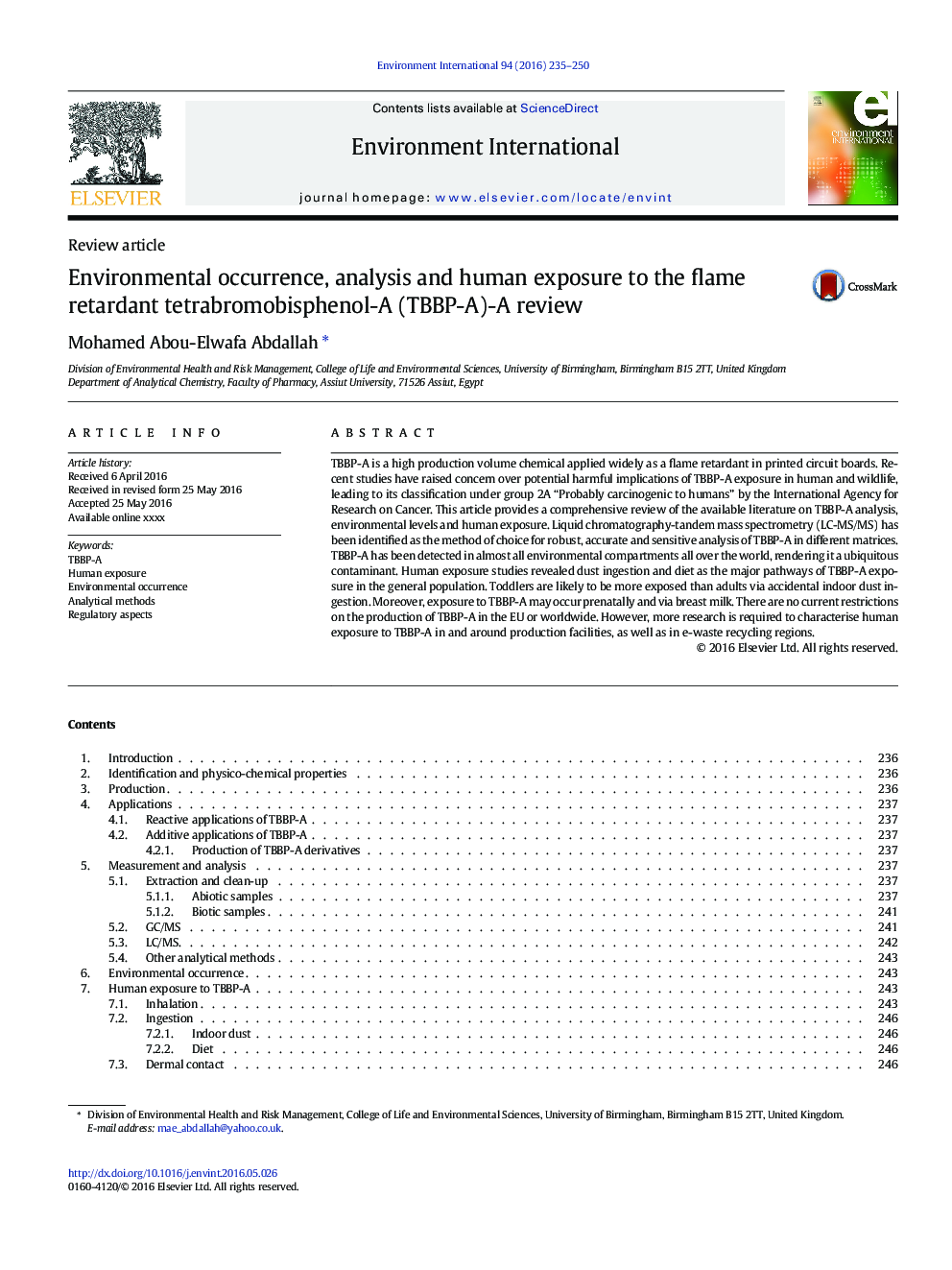| Article ID | Journal | Published Year | Pages | File Type |
|---|---|---|---|---|
| 6312772 | Environment International | 2016 | 16 Pages |
Abstract
TBBP-A is a high production volume chemical applied widely as a flame retardant in printed circuit boards. Recent studies have raised concern over potential harmful implications of TBBP-A exposure in human and wildlife, leading to its classification under group 2A “Probably carcinogenic to humans” by the International Agency for Research on Cancer. This article provides a comprehensive review of the available literature on TBBP-A analysis, environmental levels and human exposure. Liquid chromatography-tandem mass spectrometry (LC-MS/MS) has been identified as the method of choice for robust, accurate and sensitive analysis of TBBP-A in different matrices. TBBP-A has been detected in almost all environmental compartments all over the world, rendering it a ubiquitous contaminant. Human exposure studies revealed dust ingestion and diet as the major pathways of TBBP-A exposure in the general population. Toddlers are likely to be more exposed than adults via accidental indoor dust ingestion. Moreover, exposure to TBBP-A may occur prenatally and via breast milk. There are no current restrictions on the production of TBBP-A in the EU or worldwide. However, more research is required to characterise human exposure to TBBP-A in and around production facilities, as well as in e-waste recycling regions.
Related Topics
Life Sciences
Environmental Science
Environmental Chemistry
Authors
Mohamed Abou-Elwafa Abdallah,
